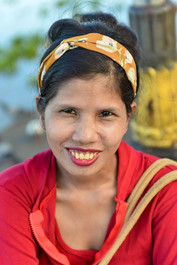Re-learning old camera skills.
- Ian Miller

- Oct 27, 2023
- 2 min read
One of the joys of photography is rediscovering the art of capturing moments with a camera. However, if you have been away from the hobby for a while, you may find that your old hand-holding camera skills are a bit rusty. This can be especially noticeable when you use a high megapixel camera, which can reveal even the slightest shake or blur in your images. To re-learn how to hold your camera steady and get sharp photos, here are some tips to follow:

- Use a proper grip. Hold your camera with both hands, one on the body and one on the lens. Keep your elbows close to your body and tuck your arms in for stability. Don't squeeze the camera too hard, as this can cause tension and tremors in your hands.
- Adjust your shutter speed. The general rule of thumb is to use a shutter speed that is at least 1 over the focal length of your lens. For example, if you are using a 50mm lens, you should use a shutter speed of at least 1/50th of a second. This will help you avoid motion blur caused by camera shake. If you are using a zoom lens, remember to adjust your shutter speed accordingly as you change the focal length.
- Use image stabilization. Many high-megapixel cameras have built-in image stabilization features ( the Nikon D800 does not ) that can compensate for some degree of camera shake. You can also use lenses that have optical image stabilization, which can be more effective than digital image stabilization. Check your camera or lens manual to see how to activate and use these features.
- Use a tripod or a monopod. If you want to ensure maximum sharpness and stability, nothing beats using a tripod or a monopod to support your camera. These accessories can also help you compose your shots better and experiment with different angles and perspectives. You can also use other objects, such as walls, tables, or chairs, to rest your camera on when taking photos.
- Practice and have fun. The best way to re-learn old hand-holding camera skills is to practice and have fun with your high-megapixel camera. Take photos of different subjects, in different lighting conditions, and at different distances. Review your photos and see what works and what doesn't. Learn from your mistakes and improve your technique. Most importantly, enjoy the process and the results of your photography.








































Comments